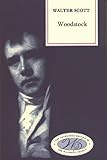Woodstock / Tony Inglis, David Hewitt, Alison Lumsden, Walter Scott, J. H. Alexander.
Material type: TextSeries: Edinburgh Edition of the Waverley Novels : EEWNPublisher: Edinburgh : Edinburgh University Press, [2022]Copyright date: ©2009Description: 1 online resource (670 p.)Content type:
TextSeries: Edinburgh Edition of the Waverley Novels : EEWNPublisher: Edinburgh : Edinburgh University Press, [2022]Copyright date: ©2009Description: 1 online resource (670 p.)Content type: - 9780748605835
- 9780748628308
- online - DeGruyter
| Item type | Current library | Call number | URL | Status | Notes | Barcode | |
|---|---|---|---|---|---|---|---|
 eBook
eBook
|
Biblioteca "Angelicum" Pont. Univ. S.Tommaso d'Aquino Nuvola online | online - DeGruyter (Browse shelf(Opens below)) | Online access | Not for loan (Accesso limitato) | Accesso per gli utenti autorizzati / Access for authorized users | (dgr)9780748628308 |
Frontmatter -- FOREWORD -- CONTENTS -- ACKNOWLEDGEMENTS -- GENERAL INTRODUCTION -- WOODSTOCK -- PREFACE -- Volume I -- Volume II -- Volume III -- ESSAY ON THE TEXT -- EMENDATION LIST -- END-OF-LINE HYPHENS -- HISTORICAL NOTE -- EXPLANATORY NOTES -- GLOSSARY
restricted access online access with authorization star
http://purl.org/coar/access_right/c_16ec
Find Out What Scott Really WroteGoing back to the original manuscripts, a team of scholars has uncovered what Scott originally wrote and intended his public to read before errors, misreadings and expurgations crept in during production.The Edinburgh Edition offers you:A clean, corrected textTextual historiesExplanatory notesVerbal changes from the first-edition textFull glossariesTitle DescriptionWoodstock opens in farce, yet it is one of Scott's darkest novels. It deals with revolution, to Scott the most disturbing of all subjects: 'it appears that every step we made towards liberty, has but brought us in view of more terrific perils.' Written during the financial crisis which led to his insolvency in January 1826, the novel, Scott feared, 'would not stand the test'. Yet it does: it is set in England in 1651 as Parliamentary forces hunt the fugitive Charles Stewart who days previously had been defeated at Worcester. In the superb portrait of Cromwell we see a self-torturing despot who attempts to be in full control in the name of religion; in the rakish Charles we see a man without self-reflection whose own libertarianism after his restoration to the English throne in 1660 permitted a great burgeoning in scientific enquiry and the arts.This edition of Woodstock is based on the first, but emended in the light of readings in the manuscript and proofs that were misread, and at times deliberately suppressed, as Scott's own handwritten words were turned into a printed book.
Mode of access: Internet via World Wide Web.
In English.
Description based on online resource; title from PDF title page (publisher's Web site, viewed 29. Jun 2022)


